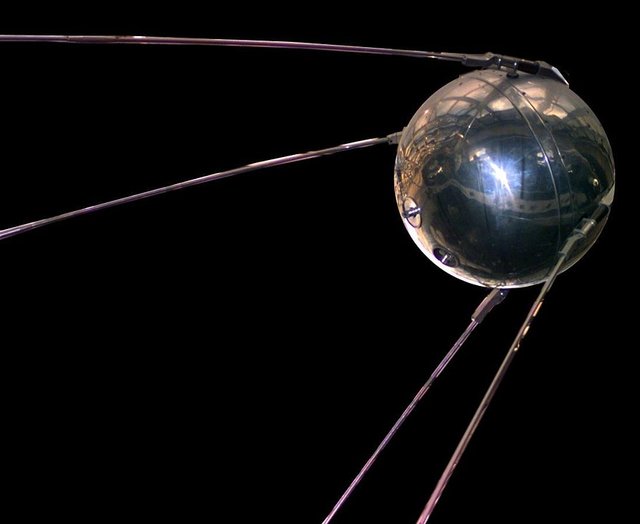4 Questions On The Invention Of The Internet
Unlike most of the things we use, it's almost impossible to picture daily life without the internet. But who exactly is credited with inventing the internet? Interestingly enough, the internet does not have a single “inventor.” Inventions such as the light bulb or the telephone can be traced back to a single person, but the internet is far from that simple. The internet is not a stand alone invention. Rather, the internet is a concept that has evolved rapidly over time. The internet got its start more than 50 years ago in the United States. Originally it was used as a weapon during the Cold War, with scientists and researchers using it to communicate, share data, and express ideas. In the present day, the internet is used for everything. From researching to shopping, the internet has permeated every facet of every day existence.

The internet relies heavily on the idea of packet sharing and data transfer.
How did Sputnik spark the internet?
When the Soviet Union launched the first manmade satellite in history into orbit on October 4, 1957, many Americans were rightfully alarmed. It wasn't the beach ball sized satellite's capabilities that set off panic, rather Americans began to realize that scientists and engineers had been focusing on the wrong things. While American technology largely revolved around bigger cars and sleeker television sets, Soviet technology was focusing on rockets, weapons, and computers. Sputnik sparked American interest in science and technology. Schools began focusing on chemistry and physics, rather than just English and math. The government formed several new agencies such as NASA and ARPA; where they began to focus on developing computers. For the first time in history, a greater emphasis was placed upon developing technology; and in true American fashion, there was no time to waste.
What is ARPAnet?

The Sputnik satellite launched by the Soviet Union in 1957.
To most Americans, ARPAnet seems a meaningless string of letters, but this invention is as integral to the birth of the internet as the computer itself. What is ARPAnet exactly? Invented by an M.I.T. Scientist in 1962, ARPAnet was a “galactic network” that allowed computers to talk to one another. ARPAnet was created out of necessity due to the government's need of increased security in the communication sector during the Cold War. ARPAnet worked through a process called, “packet switching," which is the sending of information from one computer to another. Packet switching serves by breaking down data into smaller chunks or packets, before sending that data to its intended destination. This allows for each packet to take it's own path from place to place. Without packet switching, the government's communication networks would have remained vulnerable to Soviet attacks. This technology truly laid the foundation for the internet.
When did ARPAnet deliver its first message?
Even though the technology for APRAnet was being developed in the early 1960s, ARPAnet didn't deliver its first message until 1969. Utilizing “node to node” communication (the first computer was set in a research lab in UCLA and the second was at Stanford), scientists sent the simple message “LOGIN.” The short message crashed the still infant network and the Stanford computer only received the first two letters of the message. By the end of 1969, a total of four computers were connected to ARPAnet. The network continued to grow in the 70s, when it added the University of Hawaii's ALOHAnet. It then expanded to include networks in London and Norway. As packet switched networks grew, it became difficult for them to integrate into what could be construed as the “internet.” However, by the late 1970s a scientist by the name of Vinton Cerf solved this problem by creating a way for all computers to communicate with one another. His invention was called “Transmission Control Protocol.” It changed history forever.
Who is Tim Berners-Lee?

Tim Berners-Lee who is credited with the idea of the world wide web.
Even though the internet does not have a single inventor, Tim Berners-Lee, a Swiss computer programmer is credited with introducing the World Wide Web. While Vinton Cerf's invention transformed the internet into a world wide network, Tim Berners-Lee saw the internet as more than a way to send files from place to place. Instead Berners-Lee saw it as a “web of information” that anyone on the network could retrieve. Berners-Lee laid the foundation for the internet that we know today. Since Berners-Lee, the internet has changed drastically. In 1992, students from the University of Illinois developed the first browser that they dubbed Mosaic. Mosaic offered a way for users to search the web. It allowed users to see words and pictures on a single page for the first time, all while navigating the page through a series of scroll bars and links.
I upvoted You
great scoop. need more of these article
thanks, will do my best :-)
Hi! This post has a Flesch-Kincaid grade level of 10.3 and reading ease of 51%. This puts the writing level on par with Michael Crichton and Mitt Romney.
Nice @flow
Shot you an Upvote :)